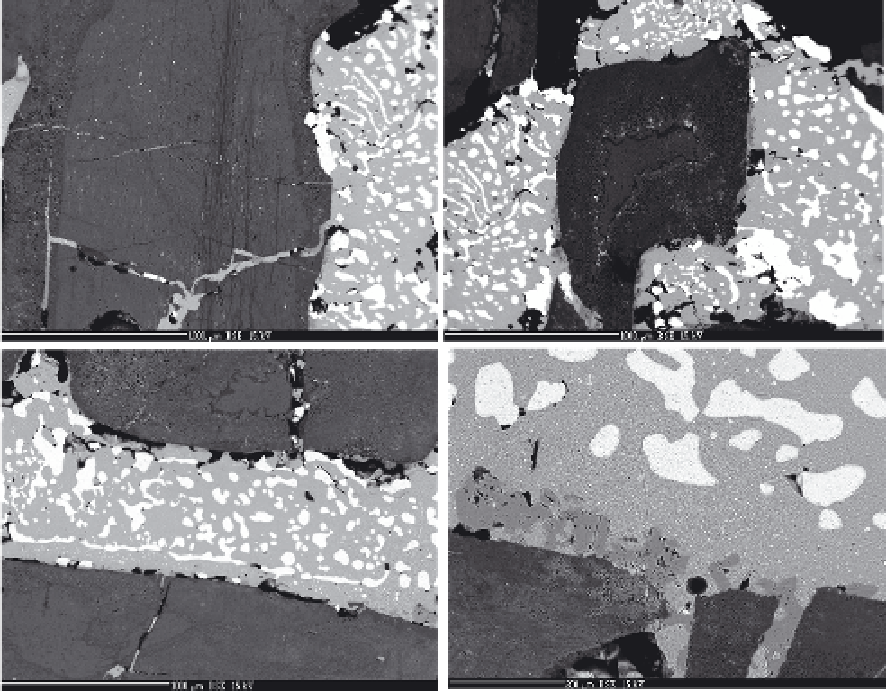Geoscience Reference
In-Depth Information
tracer of chlorine also proved inconclusive because of the similar
37
Cl/
35
Cl ratios in mantle
and crustal rocks (Sharp et al., 2007).
a
b
c
d
Fig. 11. The nodule texture is determined by a carbonate-chloride grid. Chloride minerals
are represented by massive halite (light-grey, hosting amoeboid blebs of sylvite (white).
Halite away from large sylvite formations is sprinkled with minute sylvite grains. Often
sylvite forms streaks that show distinctive alignment. The overall texture of chloride layers
and shape and distribution of sylvite, are reminiscent of liquid immiscibility. Carbonate
sheets are symmetrically zoned (a, b). Irregular aphthitalite (grey) is present in halite,
always near contacts with carbonate and in veinlets in carbonate (d).
6. Radiogenic isotope composition
An alternative approach to tracing relative contribution of mantle and crustal sources to the
primary kimberlite melt is based on a study of perovskite, a common late-stage groundmass
mineral in kimberlites (Chakhmouradian & Mitchell, 2000). Perovskite (CaTiO
3
, >1000 ppm
Sr, Rb/Sr≈0) should record the
87
Sr/
86
Sr of the kimberlite melt at the time of perovskite
formation (Heaman, 1989; Paton et al., 2007).


Search WWH ::

Custom Search